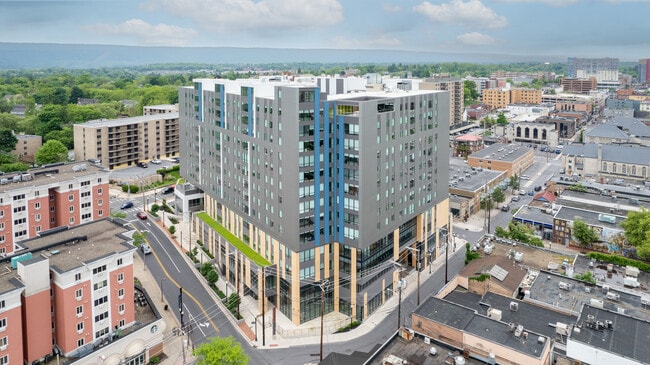The Need for More Affordable Housing in State College and Penn State University: An Integrative Approach
The document titled “The Need for More Affordable Housing in State College and Penn State University: An Integrative Approach” addresses the pressing issue of affordable housing for students at Pennsylvania State University (Penn State) and in the surrounding State College area. With over 46,000 undergraduate students enrolled, the demand for housing significantly exceeds the available supply, leading to a crisis that necessitates immediate action.
Overview of the Housing Crisis
Approximately 74% of Penn State students must seek off-campus housing due to limited on-campus accommodations. This situation has resulted in a competitive rental market where housing costs in State College are notably higher than both national and state averages. The rising costs are exacerbated by a lack of sufficient affordable housing options, which poses challenges for students, particularly those from low-income backgrounds.
The Role of Penn State
As a major educational institution, Penn State has a responsibility to ensure that its students have access to affordable housing. The document emphasizes that affordable housing is essential not only for student well-being but also for maintaining equitable access to education. The authors argue that the university should take proactive steps to address these housing challenges by integrating financial aid considerations into its housing policies.
Proposed Policy Changes
The document outlines several key policy recommendations aimed at improving the affordability and accessibility of housing for students:
- Integration of FAFSA into Housing Lottery: The authors propose that Penn State incorporate the Free Application for Federal Student Aid (FAFSA) into its housing lottery system. This change would allow the university to prioritize students with demonstrated financial need when allocating on-campus housing. By doing so, it would create a more equitable system that reflects the financial realities faced by many students.
- Need-Based Housing Contracts: Another recommendation is to adjust housing contracts to provide more flexibility and better accommodate students’ financial situations. This could involve creating tiered pricing structures or offering different types of accommodations based on income levels.
- Championing Mixed-Use and Mixed-Income Housing: The document advocates for the development of mixed-use and mixed-income housing projects in State College. Such initiatives would not only provide more affordable options but also foster diverse communities where students can live alongside residents from various backgrounds.
Student Feedback and Community Engagement
To support these proposals, the authors conducted focus group discussions with students, gathering feedback on their experiences with off-campus housing. Many expressed concerns about living conditions in poorly maintained properties located far from campus, highlighting the need for better oversight and support from both the university and local government.The document stresses the importance of community engagement in addressing these issues. By fostering partnerships between Penn State and local stakeholders, including the borough council of State College, a more collaborative approach can be developed to tackle the affordable housing crisis.
Sustainable Development Goals
The authors connect their recommendations to three of the United Nations’ Sustainable Development Goals (SDGs): reducing inequalities, promoting sustainable cities and communities, and fostering partnerships for achieving these goals. They argue that by ensuring affordable housing, Penn State can contribute significantly to building a sustainable community that supports all its residents.
Conclusion
In conclusion, the document makes a compelling case for urgent action to address the affordable housing crisis affecting students at Penn State and in State College. By implementing policies that prioritize financial need, adjust housing contracts, and promote mixed-use developments, Penn State can play a pivotal role in ensuring that all students have access to safe and affordable living conditions. This not only aligns with the university’s mission but also contributes to broader efforts aimed at fostering equity and sustainability within the community. The need for collaboration among various stakeholders is emphasized as essential for creating lasting solutions that benefit both students and residents alike.

Further reading:
Inclusionary Housing | The Standard at State College thestandardstatecollege
Transitioning from Homelessness | Homeless Shelters hhinc
